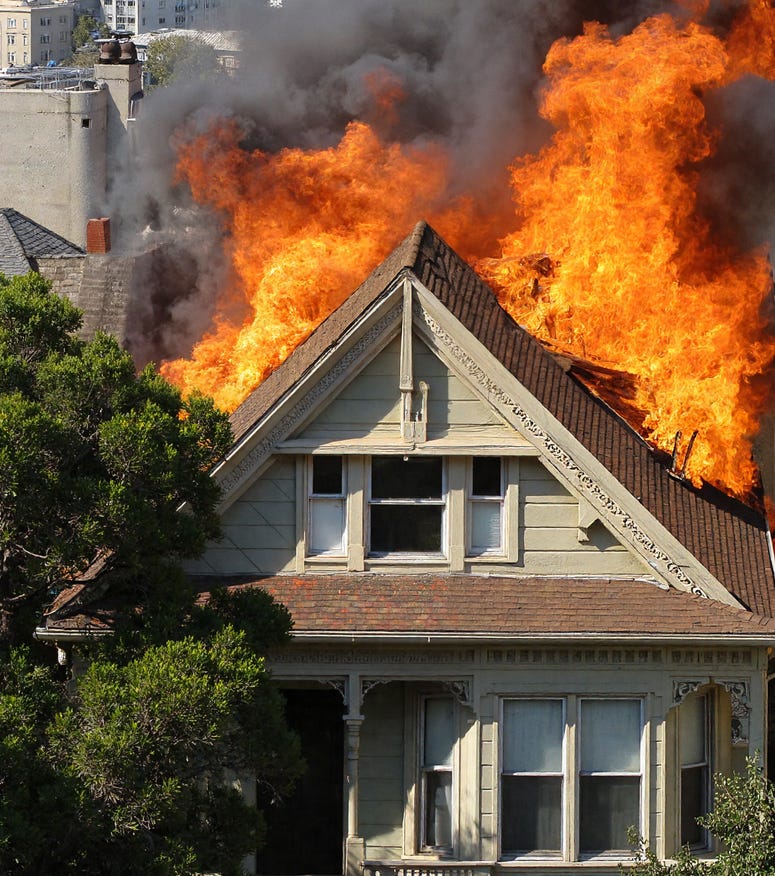The Energy You Bring into the Room Is the First Decision You Make
Think: a tiger is chasing me—I need to get away fast.
We received the call around 2 am. Reports of a house fire with ‘many phone calls.’ That means something real is happening, as reports are flooding into the emergency call center. While enroute, we received an update that there were people trapped. I’ve been in situations like this before, and I know the way I carry myself is going to matter; it’s going to matter a lot. When we arrive on the scene, the public senses our energy, and as professionals, we have a responsibility to handle the situation the best we can. We’ve trained for this. Quick. Purposeful. Thorough.
When things go sideways, most people react. They tense up, speed up, and start grasping. In other words, they react to the situation. It’s a normal process that happens to our bodies when our safety is threatened. Think: a tiger is chasing me—I need to get away fast. That gets in the way in the paramedic world. When the last safety net fails is when we START our work. Reacting slows us down when we’re already working against time. When people develop a proactive way of being, they don’t just react—they respond. That’s the difference.
This is needed in leadership today.
You don’t have to be fearless; that’s a myth. You have to stay clear enough to make the best decision you can with what you have. I’ve been in some hairy situations like the fire that night—adrenaline off the charts—what helped me lead was developing a proactive way of being under pressure. It had very little to do with being the toughest guy in the room. The key is staying grounded enough to think straight when everyone else is reacting.
That’s what being proactive looks like: holding your center when it counts, so you choose your next move instead of being dragged by the moment.
Composure as Leadership Currency
There’s a physical reason that this happens. When in reaction, our body goes into a threat response and acts accordingly. In life-or-death moments, it’s a good thing. The downside can be that we don’t have full access to the reasoning center of our brain. The tough part is that this can happen even if we think there’s a threat or if we worry about the future.
Developing the ability to stay calm can sharpen your cognitive skills when you need them most. This lets our brain process information more efficiently and access creative solutions. I've worked with veteran incident commanders who make out-of-the-box tactical decisions under extreme pressure, not because they weren't afraid, but because they'd trained themselves to think clearly under pressure. And this isn't about pushing down emotions—it's about navigating them successfully and keeping them from getting in the way.
It's a practice. It took a long time for me to develop it, and I still work at maintaining it. This starts with micro-routines that anchor you in the present moment. Between calls, I developed a fifteen-second centering practice: three deep breaths while mentally scanning my body for tension, followed by a brief reminder of what I’m there for. It’s different from meditation; it was more what I would call operational maintenance. Similarly, in the leadership context, we need to establish reset rituals that can be done quickly—whether it's a two-minute walk, a breathing pattern, or even just consciously relaxing your facial muscles before entering a difficult conversation. These small practices compound into your ability to self-regulate when stakes are highest.
The reality is that maintaining composure isn't about achieving some zen-like state of permanent calm. It's about developing what I call "dynamic stability"—the ability to bend without breaking, to feel the full weight of a situation while still making sound decisions. Some days you'll nail this; other days you'll catch yourself starting to spiral and have to consciously pull back. The goal isn't perfection; it's building the muscle memory of returning to center quickly enough that your momentary wobbles don't destabilize your entire team.
In our current global climate, where change is happening so quickly and there’s a lot of uncertainty, this skill is crucial. Leaders across every domain—from first responders to those leading other high-stakes teams—are operating in what feels like a constant state of heightened alert. The leaders who thrive won't be those who never feel overwhelmed; they'll be those who've learned to find their center even when the ground keeps shifting beneath their feet.
Your team needs you to be their fixed point in a world that often feels like it's spinning out of control.
Be Safe, Stay Strong, and Remain Resilient.
Your paid subscription helps us reach more leaders and build resilience where it’s needed most.
Be Safe, Stay Strong, and Remain Resilient.
Thank you.
Warmly,
jc
🌟 John Christy draws on over 30 years of experience in emergency services as a firefighter and paramedic and serving as the SFFD Peer Support Team leader. He shares his insights as a keynote speaker and professional coach, working with high-stakes teams and leaders. 🌟
References:
Goleman, D. (2006). Emotional Intelligence. Bantam.
McGonigal, K. (2015). The Upside of Stress. Avery.
Siegel, D. (2010). The Whole-Brain Child. Delacorte Press.





Hi John
Excellent read. Thank you.